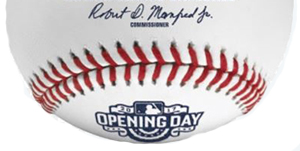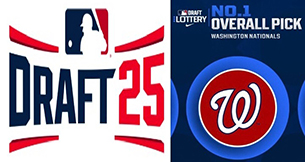“Offense sells tickets. Defense wins championships.” — Paul ‘Bear’ Bryant

You will never lose a game in any sport if the other team does not score, right? In baseball, that is known as a shutout. Usually those come in the form of team shutouts as complete-game shutouts are rare in today’s game of baseball. Pitchers are part of the defense. “Good pitching will beat good hitting any time, and vice versa.” – Bob Veale
The Kansas City Royals are a small market team that cannot afford a $200 million payroll. They won a World Series in 2015 based on a formula of building a good lineup with a great bullpen and a decent starting rotation. The following year they collapsed and only won 81-games. By 2018, they were back to losing 100+ games and collecting top draft picks. The following year they picked second in the draft and got their franchise player in Bobby Witt Jr. They devised a plan to build with middle tier starting pitchers buoyed by great defense and Witt as their star hitter.
Last year, the Royals extended Witt to through the 2030 season to give them a window, and they won a Wild Card spot and beat the Orioles in that Wild Card series. How they did it was by acquiring Seth Lugo and Michael Wacha for an average of $15.5 million in salary to take them to $160 million in CBT payroll. Certainly that is a lot for a small market team and a big gamble. They went on a different tangent on Moneyball by not going for a Billy Beane high OBP team — rather they would finesse teams by great defense to support their entire pitching staff and make each better.
Good defenders can be cheap if they have middling bats. Strikeout pitchers are expensive, and free agent aces are out of small market budgets. The Royals would analytically find pitchers who they could improve by getting their FIP to equal their ERA, and possibly have an inversion of the curve with an ERA that is better than FIP. As it turned out, their team ERA and FIP were exactly the same in 2024 at 3.76. They tied with the mighty Yankees with that 3.76 ERA for 6th best in baseball.
The Yankees are paying Gerrit Cole at $36 million, Carlos Rodon at $27 million, and Marcus Stroman at $18.5 million for a Big-3 total of $81.5 million. The 2024 Royals entire 5-man starting rotation only cost $2 million more than Cole’s salary. What happens if an expensive ace gets injured or an expensive starting pitcher doesn’t meet expectations?
While the Royals didn’t win the World Series in 2024, their GM, J.J. Picollo, knew the obvious: their total team balance was off. They needed some more of that high OBP and OPS so they traded for Jonathan India to fill a weak spot at second base and DH. They hope to fill-in some more spots with prospects and coaching up existing players. By the way, it was the Yankees who knocked the Royals out of the playoffs last year. Those Yankees had great team balance, and you can do that when your CBT payroll was $320 million, and almost exactly double of what the Royals spent.
That is the advantage of the big budget teams: They can purchase “balance” while the smaller market teams must be creative in how they build their rosters. This is what the Oakland A’s did in the early years under Beane to compete with those Yankees.
The Washington Nationals noted what Kansas City was doing, just like they saw what the Diamondbacks did in 2023 to make the World Series with a great defensive team (second in OAA) and a running game that stressed their opponents by wreaking havoc on the bases.
“Defensively, we’re going to be better — I promise you, which will make our pitching staff better — I promise you.”
— Rizzo said at a Hot Stove event
This formula is so commonsense that even large market teams like the Boston Red Sox, Giants, and Cubs have all quietly moved in this direction too. The Red Sox were one of the worst fielding teams last year. Mike Petriello of MLB.com writes, “You may not think about defense as being quite as important as a blazing fastball or a massive homer, but that doesn’t mean there’s not considerable value in it. After all, last year, five of the top eight fielding teams made the playoffs – and all of the eight weakest fielding teams missed the playoffs. You saw how Game 5 of the World Series turned on poor defense, didn’t you? … Put it all together, and we get team projections. If we just look at teams with playoff odds of at least 20% (via FanGraphs) as ‘contenders,‘ then which ones most improved their defensive projections from what they did in 2024? The answer: The Red Sox, Giants, and Cubs. Let’s explain why — and then tell you which two contenders might be shockingly weaker with the glove. ”
It is good to see that other writers are also recognizing this trend on defense, and how it factors into winning. Not just the Royals, but the Brewers, Tigers, and Blue Jays have been trending like this also. As Petriello pointed out, five of the top eight fielding teams made the playoffs and look at all of the small and mid-market teams. Note that the Yankees are right there after Kansas City in total defense which includes all infielders, outfielders, pitchers, and catchers. The exception is the Dodgers at the ninth worst defensive team. They are built the old-fashioned way on paying for aces and offensive thump.
While Jacob Young isn’t Corbin Carroll, the Nats had their havoc wreaker plus a great defender. They had CJ Abrams as a power/speed player — but Abrams was a liability with the glove. Nats’ GM, Mike Rizzo, and his analytics staff know that 5-tool players like Witt don’t come cheaply in free agency or via a trade. But if you draft at the top of the first round, you have a chance to find superstars. They drafted Dylan Crews and acquired James Wood via the Soto trade the year before. They think they have that speed and defense with both of them, although Wood struggled in his left field defense in his first month. But give it time with Wood as he was new to left field.
One pleasant defensive surprise was that Luis Garcia Jr. turned into a positive fielder in the 2024 season with a +5.0 OAA. Young and Garcia were two of the positives along with Crews winning the minor league Gold Glove for the outfield. Rizzo traded for Gold Glove first baseman Nathaniel Lowe, and just signed Paul DeJong yesterday. DeJong, a shortstop most of his career, was acquired in a trade by Kansas City last year at the trade deadline, and they moved him to third base with only 11 career games at the position. DeJong instantly looked like a Gold Glover and put up a +6.0 OAA in just two months which would be a +18.0 OAA over a full season and a sure thing Gold Glove.
Rizzo’s team has literally gone from a bottom-5 defensive team, to what could be a top-5 defensive team for the 2025 season. This could be the best defensive team that Rizzo has ever fielded. Could. It will take everyone, including the pitchers fielding their positions, to achieve this level of greatness.
For instance, Mitchell Parker was one of the lowest rated defensive pitchers, and Abrams ranked the lowest of all defenders in 2024 per OAA. So what have both players done about that? Abrams made defense a focus in the offseason. We wrote about that last week how he hired his own defensive coach, Nate Trosky, during the offseason, and hopefully that works. Parker also worked over the offseason at getting in a better position to field bunts and comebackers, and the team has been working him hard in pitcher fielding practice (PFP) through good fundamentals.
“I told [Parker] last year, ‘You screwed the pooch a couple times because you couldn’t make the play.’ That’s not going to happen this year. We’re going to make sure you make the play, and we might have you out here taking 50 [extra] balls after you throw. And he’s all for it, because he wants to get better.”
— manager Dave Martinez said over the weekend
The signing of DeJong might be a further testament that Rizzo saw that his 2024 pitching staff put up the 9th best FIP in baseball at 3.94, while the actual results was the 8th worst ERA at 4.30. The clear divide was suboptimal defense. Imagine if the Nats could achieve that FIP number of 3.94 or better, as their ERA in the 2025 season. Defense matters analytically for that reason. Great defense will save you in the pitch counts and on the scoreboard.
For infielders, pitchers, and catchers, they have to also know the speed of the runners. The average runner gets to first base in 4.7 seconds per Martinez. Jot that number down for future reference. But the key is to be quicker than that so you can beat the fastest runners.
“Get to the ball and get an out. We don’t want to see a spectacular play. We just want to see you make the routine play, and just get an out.”
— Martinez said
Think of great defense that starts with competent pitching. You need that. Defensive Runs Saved (DRS) is that key where the Royals saved their pitchers 47-runs versus the Nationals defense that cost their pitchers -21-runs. That is a 68-run differential between the two teams. That is a ton of extra wins if the Nats can improve their defense so dramatically. In 2024, a 68-DRS improvement would have added about 8-wins. On paper, it all sounds great. Putting theory into practice isn’t as simple as it sounds — but this could work.
We have already talked about how the roster should be better just based on the addition by subtraction theory. Now let’s see if the team can be improved by DRS.









